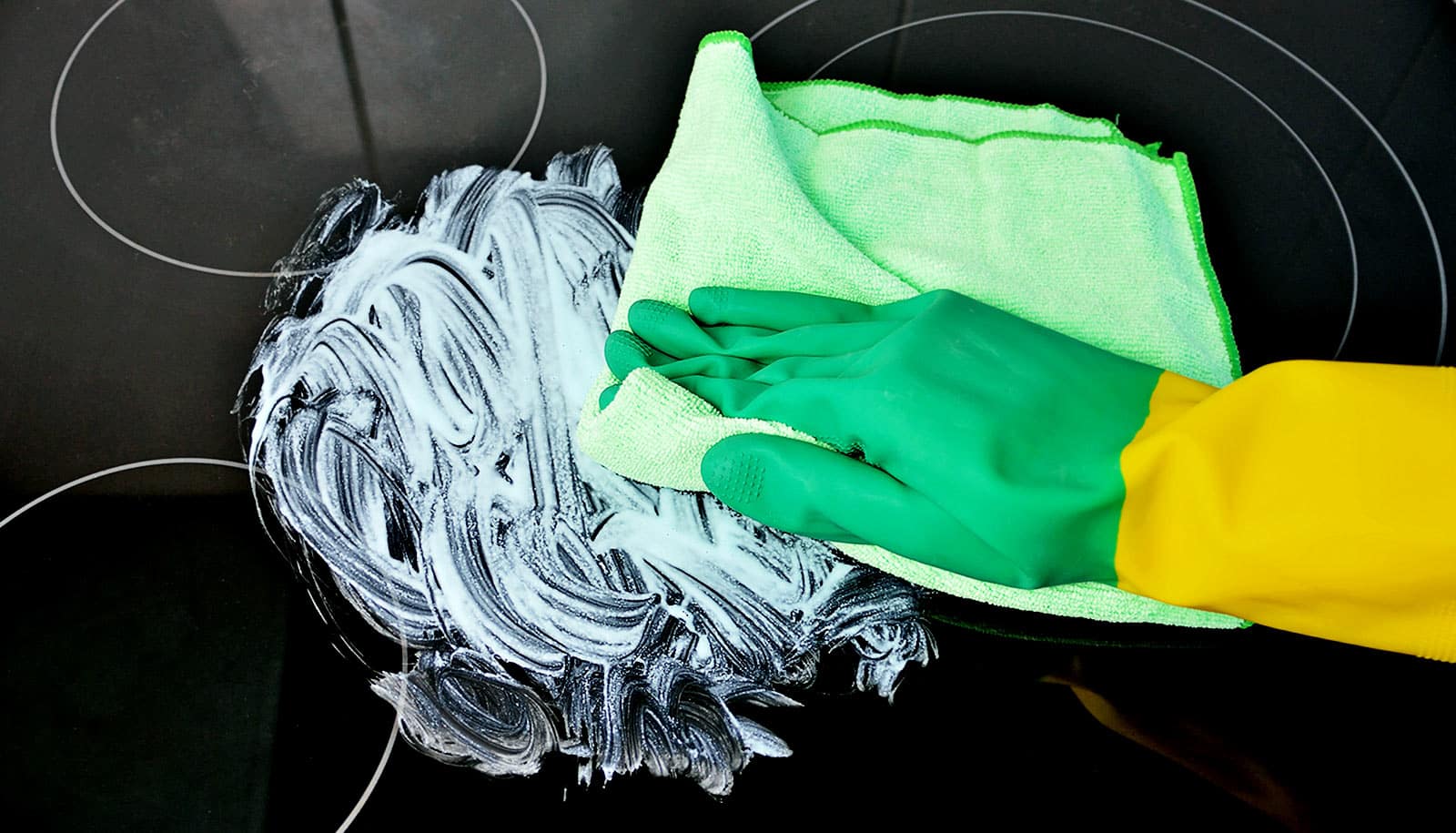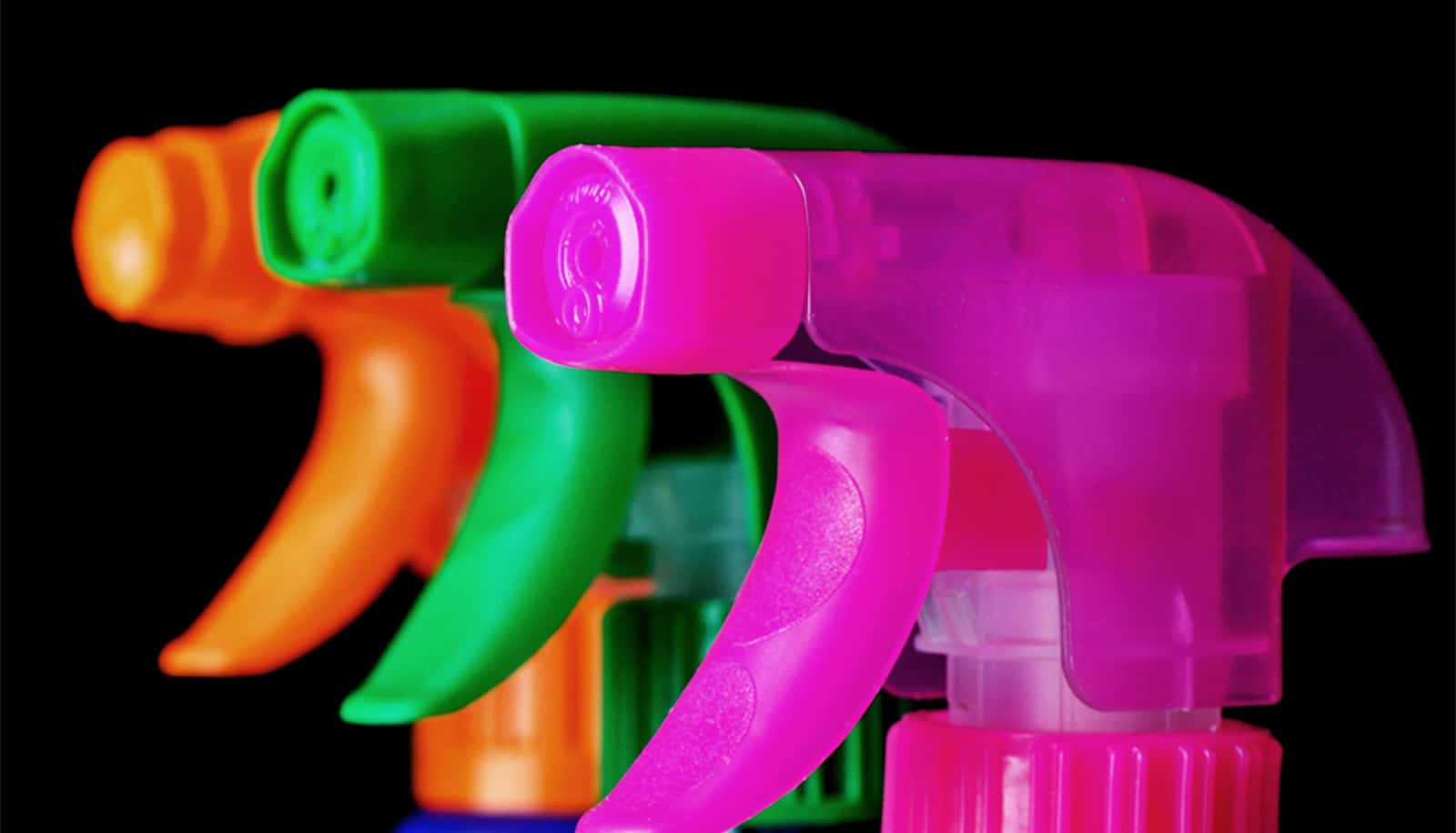A recent study looked at four sanitizers that claim to be effective at inactivating human norovirus.
The researchers found that three of them had very little effect on the pathogen.
Published in the journal Applied and Environmental Microbiology, the findings could inform efforts to reduce the risk of spreading human norovirus.
Norovirus infects around 20 million people in the US each year and costs the economy more than $160 million annually.
Here, coauthor Lee-Ann Jaykus, professor of food microbiology at North Carolina State University, talks about what worked well against the virus, what didn’t, and why it’s so important:
By way of background, can you tell me why norovirus is such a big deal in the context of food safety?
Human norovirus is the leading cause of acute viral gastroenteritis—think vomiting and diarrhea; usually short-lived, but miserable. It is responsible for 20-25 million cases of gastrointestinal illness per year in the US alone.
While community transmission (person-to-person) is most common, about 20-25% of cases (around 5 million per year) occur as a consequence of contamination of food, often due to poor personal hygiene of infected food handlers. This can happen anywhere along the food supply chain, but is most frequent in restaurants and retail food establishments.
Because of its unique structural features, human norovirus is persistent in the environment and resistant to many sanitizers and disinfectants used by the food industry, as well as those used by consumers and in institutional settings.
Why do we see comparatively little research on norovirus compared to other foodborne pathogens?
Human norovirus is spread by the fecal material of infected individuals, who can shed billions of viruses at any one time. It cannot be easily grown in the lab, so we rely on DNA-based molecular methods to detect norovirus. However, these methods do not always correlate with whether the virus remains infectious, or able to cause disease.
The US EPA allows companies manufacturing sanitizers and disinfectants to make label claims relative to human norovirus efficacy if they evaluate their products using a culturable “surrogate” virus, i.e., one similar to norovirus but able to be grown in the lab.
The problem is that the common surrogates are more sensitive to many sanitizers and disinfectants than human norovirus is. So there are many products on the market that claim to have activity against norovirus but, actually, they may not be very effective.
What were the questions that you were setting out to address with this study and why?
We had two major research questions. First, what is the efficacy of sanitizers commonly used by the retail food industry against human norovirus. Second, what is the relative importance of including a wiping step during the sanitizing process?
We evaluated four commercially available products with different active ingredients, against two human norovirus strains and a newer culturable surrogate called Tulane virus. This allowed us to compare the results between all four products and the three viruses.
And what did you find?
Our findings can be summarized into three major points.
First, we found that on Formica (a common surface material used in food service), only one of the four products tested was able to provide any significant activity against human norovirus; the other three products inactivated only a negligible amount of virus.
Second, we found that the addition of a wiping step to the sanitation process provided removal of 95-99.9% of the virus on the surface.
Finally, the performance against all three viruses was nearly identical for each of the four products. In other words, if Product A inactivated 50% of one human norovirus strain, it also inactivated around 50% of the other human norovirus strain and the Tulane virus. This tells us that Tulane virus might be a better surrogate than the viruses currently used as proxies for human norovirus upon which to base label claims.
Why is this important?
One of the most interesting findings was that the quaternary ammonium-based compound (QAC) did not show any real anti-noroviral activity against the virus strains tested. This is important because the vast majority of the restaurant and retail sector in the US routinely uses QAC-based products to sanitize tables in dining areas.
Further, we were able to recover infectious virus from paper towels used to wipe contaminated surfaces, which suggests that if the sanitizer does not kill the virus, towels used in wiping could spread viruses if reused on another surface. This may be of concern due to the widespread use of the so-called rag-and-bucket method, where reusable wiping cloths are kept in sanitizer solutions for extended periods of time and are used to wipe multiple surfaces before replacement.
A recently developed alcohol-based product was able to inactivate about 99.9% of the virus without a wiping step. When wiping was incorporated, the combination resulted in elimination of human norovirus from the contaminated Formica surface.
It should be noted that although ethanol is listed as the active ingredient for this product, it really is the product formulation as a whole driving the efficacy.
The company that funded this work makes the alcohol-based disinfectant to which you refer. How can people know that these findings weren’t influenced by that?
First of all, this was a comparative study and all products were evaluated in the same manner. Secondly, all studies were done in triplicate, so the data are repeatable. Thirdly, by testing for residual virus on the surfaces before and after sanitation, and on the spent paper towels after sanitation, we were able to account for virtually all of the input virus.
Nothing occurred that could not be explained. Finally, as an academic institution, we approach our work in an unbiased manner, and have no vested interest in the results. They speak for themselves.
This is one of the first, if not the first, studies to examine both how effective the disinfectants were at inactivating human norovirus and at how effective wiping the surface is at removing the virus.
Can you talk about the study design a little bit? For example, it’s my understanding that your research team developed a machine to do the wiping—a sort of “wiper-bot”—so that all of the wipes would be exactly the same. Why was that important?
Other scientific, lab-based studies have sought to examine the efficacy of wiping. However, those studies used methods that were either significantly scaled down for the wiping motion, or not well controlled in terms of number of wipes, pressure with which the wiping was applied, and integrity of the surface material, to name a few variables that could affect study results.
Our group developed a device that addressed these previous deficiencies, allowing us to study this phenomenon in a more controlled and realistic manner, and to investigate common sanitizer application methods, such as spraying on surfaces.
Based on everything you learned in this study, what do readers need to know and what are the take-home messages for the industry and consumers?
There is a high degree of variability in the anti-noroviral efficacy of commonly used surface sanitizers, even those allowed to make label claims based on current EPA standards.
Users of these products should be cautious in interpreting these claims. It also highlights the importance of wiping in the process of sanitization, which significantly improves product efficacy through the action of physical removal of virus.
For products not showing efficacy against norovirus, care should be taken to prevent contaminating other surfaces by reuse of wiping implements.
There is a need for more and better product formulations with demonstrated efficacy against human norovirus. These findings help all stakeholders make informed decisions on sanitizing product selection and application methods with a specific focus on reducing the foodborne transmission of norovirus associated with contaminated surfaces.
Source: NC State



